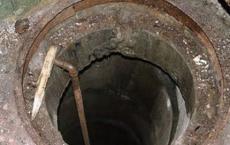Emergency and backup power supply
Backup power supply
The most critical areas of production and social facilities require increased reliability of energy supply and must be protected from interruptions in the supply of electricity. The most important facilities that require backup power supply include healthcare facilities, water intakes, sewage pumping stations, industrial enterprises with a continuous cycle, enterprises of the nuclear and chemical industries, schools, banks, hotels, sports facilities, objects of the Ministry of Emergency Situations, etc.
The problem of backup power supply of enterprises is helped by backup power supply systems based on diesel generator sets of diesel generator sets. In the event of an emergency, the backup power supply system should ensure the normal operation of the facility (boiler room, water intake, computer system, etc.) from backup power sources in a few minutes.
The backup power supply system is equipped with automation systems for the 1st, 2nd or 3rd. In the event of a power failure in the supply network or in one of its phases, or when the voltage of one of the phases drops below the set adjustable voltage threshold, a control signal is given to , and the load is automatically switched to the backup power supply system. After the restoration of the main network, the reverse switching of the load to the network is automatically performed.
The growth in the production of cost-effective sources of autonomous electricity makes it possible to meet the increased demands of consumers for the quality and reliability of power supply. Now in the West it is already difficult to find a firm, enterprise or institution that would not be equipped with backup sources of energy supply, since universal computerization makes almost any work process highly dependent on a stable energy supply.
Redundant power supply through the use of diesel generator sets helps to avoid unnecessary economic costs, as well as downtime at manufacturing plants.
Emergency power supply
The quality of electricity coming from the public power supply network leaves much to be desired: the signal shape is different from sinusoidal, there are often surges and short-term voltage drops, power outages. This is especially true for suburban housing. Voltage fluctuations lead to damage to equipment and domestic inconvenience. And in office buildings, especially in the historical center of the city, the allocated capacity of the municipal network may not be enough. A reasonable way out of these situations is to install your own emergency (guaranteed and uninterrupted) power supply system.
Recall that in the case of an office building or a country cottage, part of the consumers is connected directly to the municipal public power supply network (through an apartment, office or floor switchboard), the other part is powered by a power generator through an automatic transfer switch (ATS), and a special group of consumers is connected through an uninterruptible power supply. power supply (UPS) or inverter. In this case, the generator serves as a source of guaranteed power supply, and the UPS serves as a source of uninterrupted power supply.
Since it is impossible to install an electric generator in a city apartment, the problem of emergency power supply is best solved using a UPS (inverter).

Uninterruptible power supply system
The generator turns on when there is a power failure in the public network. You can ensure automatic switching on of the generator set using. If the generator is not equipped with an ATS, this device can be purchased separately.
The generator (power plant) includes an internal combustion engine that drives the rotor of the electric generator. Thus, the energy of fuel combustion is converted into electricity. Reserve autonomous operation of the generator (depending on the capacity of the fuel tank) can be from 4 to 48 hours.
Classification of generators
Criterion:
- generators: gas generators, diesel generators, gasoline generators
Generator fuel type:
- Diesel - diesel generators: domestic and industrial, power up to 3000 kW
- Gasoline - gasoline generators: only household, portable, power up to 15 kW; relatively inexpensive and easy to use
- Gas - gas generators: stationary and portable, domestic and industrial
Generator execution class:
- Stationary generators: engine radiator cooling, power up to 2400 kW
- Portable generators: air-cooled engine, power from 0.5 to 30 kW
Generator electricity type:
- DC generator
- Alternator - single-phase and three-phase
Generator use mode:
- Backup power supply (gas reciprocating power plants - gas generators; diesel generators - power plants of small and medium power) - designed for short-term (several hours) switching on in case of power outages or for recharging UPS batteries
- A permanent power source (gas generators; diesel power plants) - designed for round-the-clock power supply to consumers for a long time (for example, if electricity is not supplied to the cottage).
To install the generator, it is necessary to allocate a special room with good sound insulation and an exhaust system. It is also possible to install the generator outdoors in a weatherproof casing.
Uninterruptible power supply system
The core of an uninterruptible power system is a UPS (inverter is the commercial name for a UPS with a long battery life). The principle of operation of this system is as follows. If the main power comes from the public power system, the UPS acts as a stabilizer; during this time, the UPS batteries are being charged. In the event of a power outage, the load is automatically powered by the UPS. When the power supply is restored, the batteries start charging again.
The uninterruptible power supply system protects the load from:
- Short-term shutdown and power surges in the network.
- Waveform distortion, frequency changes, noise.
- Drawdowns and emissions.
- Effects of transients during switching (for example, switching on a reactive load).
A UPS (inverter) is a device that includes an electrical signal converter and batteries. The UPS converts the DC 12/24V battery voltage to AC 220V (and vice versa). There are three UPS classes (see Table 2).
UPS classification
|
UPS class |
OFF line |
Line Interactive |
Online |
|
Power |
Less than 1.5 kVA |
Less than 4 kVA |
Hundreds of kVA |
|
Normal operation |
|||
|
Voltage stabilization |
Not |
stepped |
Complete |
|
Frequency stabilization |
Not |
Not |
Double conversion UPS only |
|
Noise filtering |
Weak |
Medium |
Maximum |
|
Battery operation |
|||
|
Transfer time to batteries |
5-15ms |
2-6ms |
|
|
Output voltage waveform |
Often trapezoidal |
sinusoidal |
sinusoidal |
|
Battery life |
5-7 min |
Up to 1-1.5 hours |
Up to several hours |
Autonomous power supply system
If you are building a house on a plot, the supply of communications to which is difficult or impossible for some reason, you have to solve the problem of autonomous power supply.
To provide autonomous power supply to cottages, inverters (or On-line UPS) can be used in conjunction with alternative sources of electricity (wind farms or solar panels) or with electric generators. However, due to a number of advantages, they are increasingly being used instead of electric generators as a backup power source.
Comparison of electric generators and inverters
|
Criterion |
Electric generator |
inverter |
|
Auto power on |
Only with AVR |
Yes |
|
Increasing battery life |
Difficult - replacing or installing an additional fuel tank |
Simple - installation of additional batteries |
|
Turn-on time |
From 4 s |
Up to 10ms |
|
Voltage stabilization |
Not |
Yes |
|
Service |
Refueling, fuel control, oil change, filters, injectors, spark plugs |
Not |
|
Side effects of work |
Noise, vibration, exhaust gases |
Not |
|
Use as the only source in an autonomous power supply system |
Yes |



